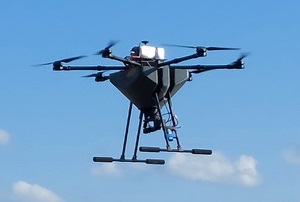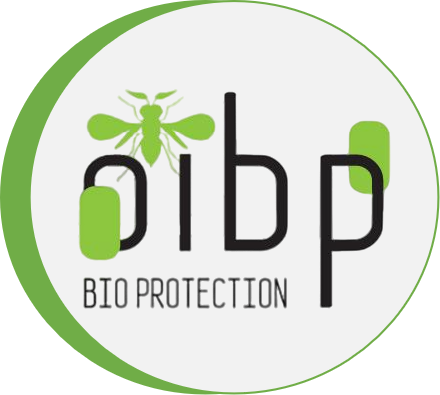 TRICHOGRAM BIOAGENT
TRICHOGRAM BIOAGENT
AGRICULTURE
“Organic Invest Bio Protection Ltd. issues a Trichogramma Colonization Certificate and a Quality Certificate, with which you can receive a subsidy
OIBP Standard
Trichogram CAPSULES
Against: Corn stem borer Ostrinia nubilalis Hb. and others of the family. Lepidoptera
Against a generational enemy.
Capsule Contents:
Parasitized Trichogramma brasica eggs in biodegradable capsules
Norm: 100 capsules (170 000 eggs) per hectare
Trichogram is a completely harmless product for humans, animals and food!
OIBP Extra
Trichogram CAPSULES
Against. Lepidoptera
Against a generational enemy.
Capsule Contents:
Parasitized Trichogramma brasica eggs in biodegradable capsules
Norm: 100 capsules (340 000 eggs) per hectare
Trichogram is a completely harmless product for humans, animals and food!

COLONISATION
WITH DRONES
Colonizirane
drone
Colonizing trichogramma with drone for areas between 30 and 100 hectares.
The service is provided by Agroservice Bulgaria Ltd.
Colonizirane
drone
Colonizing trichogramma with drone for areas over 100 hectares.
The service is provided by Agroservice Bulgaria Ltd.
Important!
When colonizing with a drone
When ordering a trichogram collimation using drones, follow these steps:
- Note that it takes time to prepare the process. We recommend to conclude contracts with us in advance and in a timely manner.
- After you place an order for trichogram colonization, you need to send us KML files of your fields by email: order@trichogramma.bg
- We prepare the trichogram – with a different period of reflection, according to the enemy, the sequential number of treatments and other factors, as well as the flight mission
- The most important step – start the enemies flying, through careful and accurate monitoring! Since the trichogram works on the eggs of the enemies, realistically, our actions are preventive – so that no offspring of enemies hatch and develop.
- After establishing the start of the flight, we agree on a date and time for the colonization.
- Our team performs colonization with trichogram
- “Organik Invest Bio Protection” Ltd. issues a certificate of colonization and a certificate of quality of the used trichogram. The documents you will need to receive the subsidy
Norms and types Colonization (displacement) of trichogramma
Standards for industrial crops:
– in the first generation of a pest, the norm is – 120/140 thousand female eggs per hectare or up to 2 grams.
– in the second and third generation of the pest, the norm is – 240/260 thousand female eggs per hectare or up to 4 grams.
Norms for other crops:
Depending on the type of plants and their vegetation, as well as the type and nature of the pest.
Important: The rates are determined based on the nature of the pest (type and amount of oviposition), as well as the stage of vegetation (field volume).
There are two methods of colonizing (displacing) the trichogramma, “Free displacement“ and “Capsule”. We practice them both and they are successful when the technology is properly followed:
“Free displacement“
– Colonize trichogramma, in the form of eggs, mixed with meal (for balance), in portions, from a height of 7-12 meters (depending on the flying apparatus and the strength of the wind). thus spreading the eggs over a large area. from the tops of the plant and to the ground.
– The trichogram has been specially prepared and has three hatching (reflection) periods with each period lasting four days.
– Hatching begins within the first 12 hours after colonization, and continues over a period of 10 days.
The given displacement can be carried out at temperatures from +14 to +28°C. Usually in the period from 19 pm, and until 09 hours.
Efficiency;
– the main determinant is timely colonization – before the onset of mass oviposition or within five days after an established pest flight.
– Efficiency is huge and instantaneous, but the multiplicity of colonization is up to 8-12 days. That is, it takes two displacements every 8-12 days to cover one generation per pest.
– easy logistics, possibility for cheap and productive colonization.
Important: Main cons at, “Free displacement“:
– trichogramma eggs are not protected from predatory insects. Usually, up to 10-15% are the losses that are reported and set in the norms.
– Mating of males and females is minimal, no more than 15%, in this situation the female self-fertilizes, but lays only males.
– The effect of the biotope, of parasitized pest eggs is up to 15%, (minimum second generation trichogramma).
The method is applied in the former Soviet republics, India, Pakistan and partly in Canada, the USA and China.
“Capsule displacement”
– capsule is a cellulose container, resistant to moisture and temperature fluctuations, self-degrading in nature.
– Colonise from 7-30 m altitude (depending on the aircraft and wind strength), 100 capsules per hectare.
– the trichogram is specially prepared and has four hatching (poisoning) periods, each period having a term of four days.
– Hatching begins within the first 12 hours after colonization, and continues over a period of 12 days, with approximately equal numbers of trichograms hatching each day.
Efficiency;
– the main determinant is timely colonization – before the onset of mass oviposition or up to five days after the established flight of an enemy.
– The efficiency is enormous and instantaneous, one colonization completely covers the calamity of one generation of pest.
– Trichogramma eggs are protected from predatory insects and weather.
– mating of males and females is maximum, over 97%
– the effect of the biotope from parasitized pest eggs is over 90%, (full second and partial third generation of trichogramma).
Important: Main cons for, “Capsule displacement”:
– complex logistics because of the volume of the capsules and special storage conditions.
– specialized sophisticated colonization systems, expensive drones and specialized service.
The method is applied in France, Spain, Germany, Italy, etc., EU countries as well as Switzerland, Canada, USA and China.
Monitoring
In the application of bio agent trichogram for plant protection, pest monitoring is the foundation of success.
It is of utmost importance to accurately determine the onset of flight and mass oviposition, since it is the eggs of the pest that are parasitized by the trichogramma.
The main tools in monitoring pests are; pheromone and light traps, beneficial patterns (determine favorable temperatures and moisture) and visual control (most evening time in headlight).
We have vast experience and observations in pest monitoring with pheromone traps, utility models and visual control.
Useful models, warn us 3 to 5 days in advance, about the onset of enemy infestation in a particular region. The models are extremely accurate, with an error of +/- 1 day.
Pheromone and light traps, attract the enemy and fix the beginning of reproduction and oviposition. The quality of the pheromones, is not always good, so we recommend duplicating pheromones from different manufacturers!
There have been numerous cases where pheromone traps have been absent of pests, and we find mass infestations of caterpillars on plants in the field.
Most lepidopteran pests can and do migrate long distances, from 8 to 30 km. on a windy day (we’ve all watched the wind carry a butterfly tens of meters in seconds).
We:
-send a signal based on useful models to all our partners to start calamity of economically important enemies by region (land of several neighboring villages, radius no more than 30 km).
– we warn about the development of calamity according to the patterns, and from partner feedback (established pheromone or visual control).
You:
– after our alert you have 3-5 days to place pheromone or light traps.
– after placing the traps, visual inspection is required every three days during the first week and every two days during the second week.
Our recommendations are:
If no pests have been caught in the traps, and utility patterns indicate mass egg laying or a hatch is detected on adjacent farms, we recommend visual monitoring, in the evening by light from headlamps.
After an initial flight is detected, and a signal is given, colonization needs to be carried out within 3 to 7 days.
Important!
– Trichogramma is a bio plant protection agent that fights egg stage pests by parasitizing their eggs.
– against hatched larvae of pests trichogram is useless.
– the trichogram does not affect and application and is not related in any way to the processes of plant vegetation
